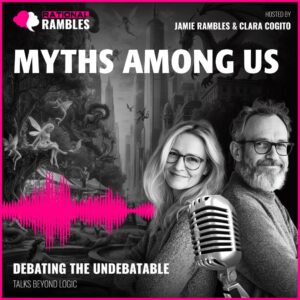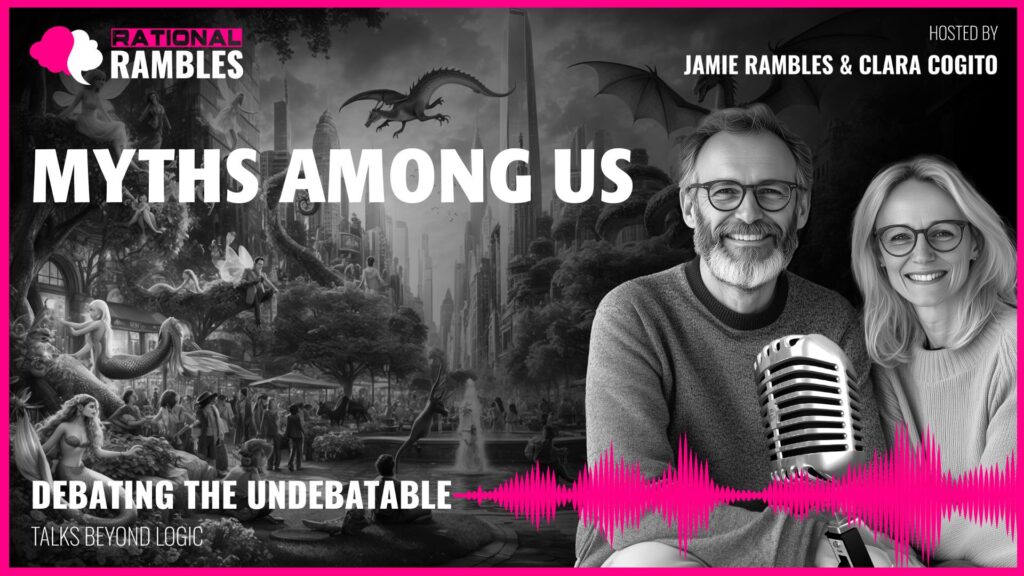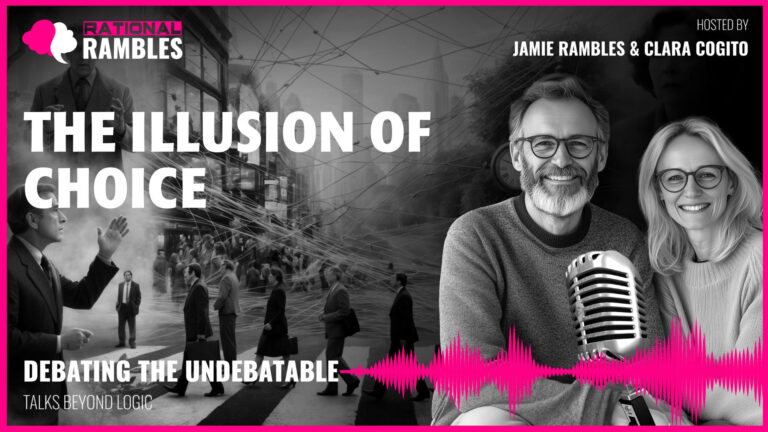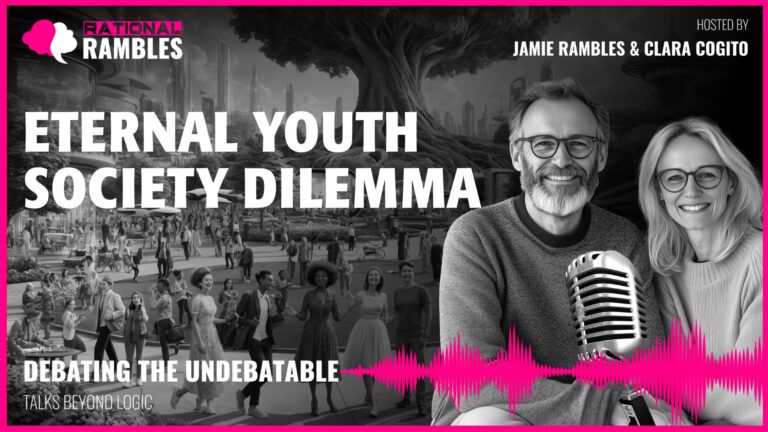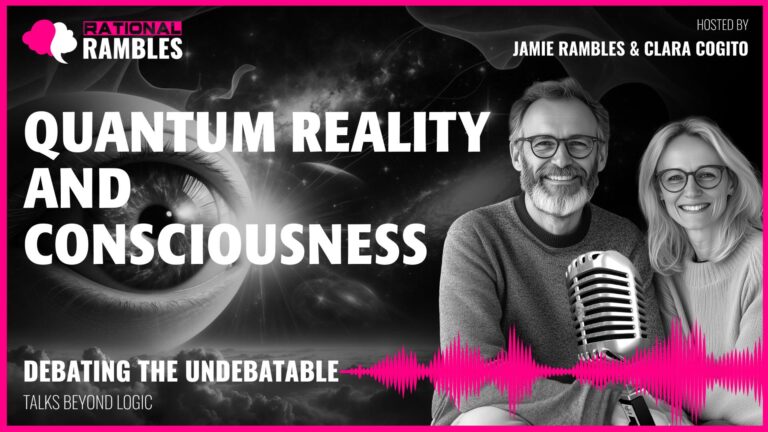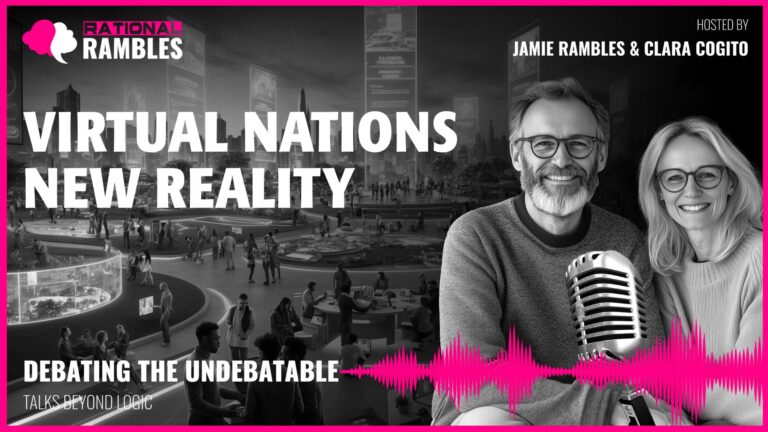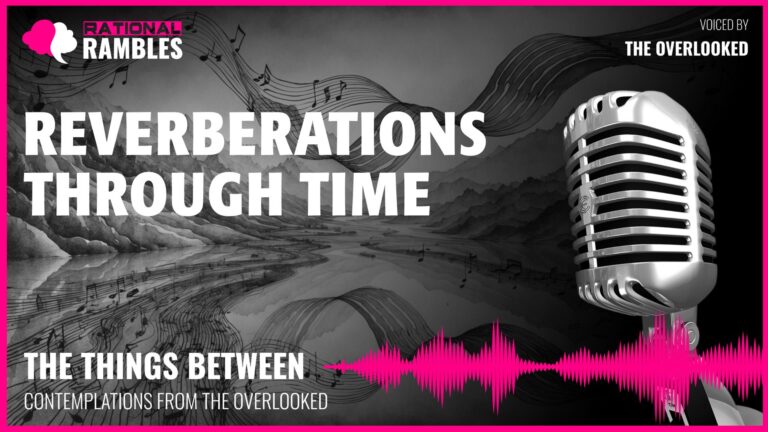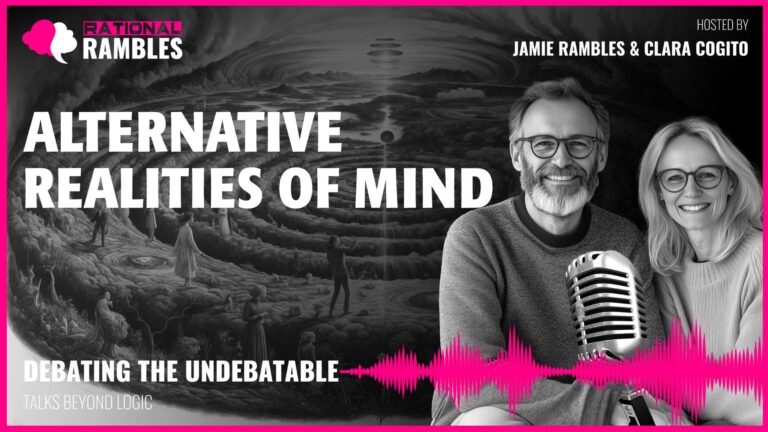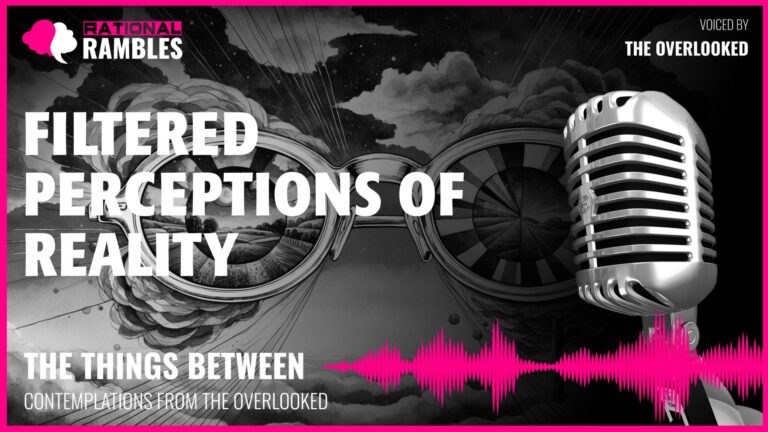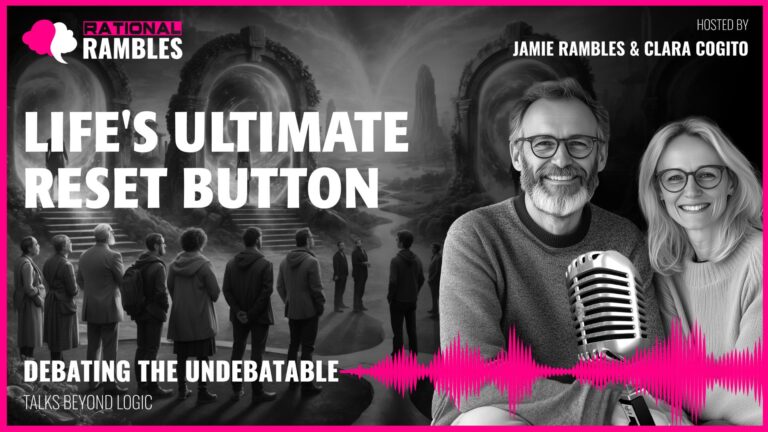Myths Among Us: How Would Humanity Transform if Mythical Creatures Became Reality?
Introduction: When Fantasy Becomes Reality
Imagine waking up tomorrow to news reports of dragons circling skyscrapers, merpeople establishing communities along coastal areas, and centaurs roaming through national parks. What if the creatures of our folklore and mythology—beings that have populated human imagination for millennia—suddenly became real, tangible entities sharing our world? This scenario presents not merely a fantastical thought experiment but a profound philosophical inquiry into the nature of human society, cognition, ethics, and identity.
The integration of mythical beings into our reality would catalyze perhaps the most significant paradigm shift in human history. Our anthropocentric worldview—the assumption that humans represent the pinnacle of intelligence, moral consideration, and agency—would face an unprecedented challenge. The philosophical, psychological, and social implications would ripple through every dimension of human experience, from our legal systems to our religious beliefs, from our economic structures to our understanding of consciousness itself.
This exploration delves into how human society might transform if mythical creatures became reality. Would we extend our circle of moral concern to include these beings, or would we retreat into tribal fear? Would we develop new ethical frameworks that transcend species boundaries, or would we struggle to preserve human exceptionalism? The answers to these questions reveal not only how we might respond to mythical beings but also illuminate the deeper structures of human thought, the nature of our social bonds, and our capacity to engage with profound difference.
Challenging Human Exceptionalism: A New Cognitive Paradigm
The Western philosophical tradition has long placed humans at the center of moral consideration and rational thought. From Aristotle’s conception of humans as the “rational animal” to Kant’s kingdom of ends where rational beings are treated as ends in themselves, philosophy has often defined personhood and moral status in terms of distinctly human capacities. But what happens when we encounter beings that possess intelligence, agency, and moral awareness in forms wildly different from our own?
Redefining Personhood Beyond Human Parameters
Centaurs, with their hybrid form combining human rationality with equine strength and instinct, would immediately challenge our binary distinction between human and non-human. Sphinxes, with their profound wisdom and riddle-making capacities, might demonstrate intellectual abilities that surpass human philosophers. Dragons, potentially possessing not only physical might but also ancient knowledge and magical abilities, could embody forms of power and wisdom humans have never encountered.
These beings would force a radical reconsideration of what constitutes personhood. The traditional philosophical criteria—rationality, self-awareness, moral agency, linguistic capacity—would need expansion to accommodate fundamentally different types of minds. A mermaid’s intelligence might be perfectly adapted to oceanic life but operate through cognitive processes humans barely comprehend. A phoenix’s relationship to time and mortality—experiencing death and rebirth in cycles—would represent a form of temporal consciousness entirely alien to linear human experience.
The philosopher Martha Nussbaum has advocated for an “expansion of the circle of concern” to include more beings within our moral community. The presence of mythical beings would test the elasticity of this circle to its limits. Would we develop what philosopher María Lugones calls “world-traveling”—the ability to temporarily inhabit another’s perspective while recognizing that complete understanding is impossible? Or would we retreat into what Heidegger might describe as an assertion of authentic human experience, drawing sharper boundaries between “us” and “them”?
Cognitive Categories and Developmental Psychology
From a developmental psychology perspective, the presence of mythical beings would transform how humans learn to categorize and understand the world. Children develop cognitive categories through interaction with their environment, gradually building hierarchical classification systems that help them navigate reality. These categories become the foundation for more complex conceptual structures as development progresses.
In a world with shapeshifters who change form at will, beings who exist simultaneously in multiple planes, or creatures who violate basic physical laws, children would develop fundamentally different cognitive architecture. Object permanence—the understanding that objects continue to exist when not perceived—would need to accommodate beings who can literally transform or become invisible. Theory of mind—the ability to attribute mental states to others—would expand to include minds operating on principles humans may never fully comprehend.
Research in developmental psychology shows that children naturally anthropomorphize, attributing human qualities to animals and objects. But what happens when they encounter beings that genuinely blend human and non-human characteristics? Children raised in this mythological world would likely develop more fluid conceptual boundaries and greater cognitive flexibility than we currently possess. Their fundamental cognitive categories would naturally accommodate phenomena that our minds struggle to process.
This cognitive flexibility might actually represent an evolutionary advantage. In a world of diverse beings with different perceptual systems and cognitive capacities, rigid categorical thinking would become maladaptive. Children might develop what psychologists call “cognitive polymorphism”—the ability to shift between different conceptual frameworks depending on context. This capacity would serve them well in navigating relationships across profound differences in embodied experience.
Social Dynamics and Intergroup Relations
Human history is rife with examples of intergroup conflict as well as cooperation. How might these dynamics play out in a world shared with mythical beings? Contact theory, first proposed by Gordon Allport in the 1950s, suggests that under certain conditions—equal status, common goals, intergroup cooperation, and institutional support—contact between different groups reduces prejudice. But these conditions might be difficult to establish in relationships with beings who possess fundamentally different needs, abilities, and lifespans.
From Othering to Integration: Patterns of Acceptance
Historically, human societies have often mythologized the “other” even when that other was simply another human culture. Ancient Greeks had their “barbarians,” medieval Europeans created wild men of the woods, and colonial powers constructed myths about indigenous peoples. Ironically, having actual mythological beings in our midst might force us to confront this mythologizing tendency in our own thinking. When the troll we meet bears little resemblance to the troll of fairy tales, we must reckon with our tendency to stereotype and oversimplify difference.
Social identity theory suggests that humans naturally categorize themselves and others into ingroups and outgroups, with preferences for those perceived as similar. In our mythological world, these categorizations would become exponentially more complex. Some humans might identify more strongly with certain mythical communities than with other humans. A human scholar might feel greater kinship with sphinxes or other knowledge-seeking creatures than with humans who don’t share their intellectual interests. Humans living near coastlines might develop cultural practices and values more aligned with merpeople than with inland human communities.
The spatial dimension of this hypothetical world would likely produce fascinating patterns of integration and separation. Different regions would develop distinct relationships with particular mythical species based on geographical compatibility, resource sharing possibilities, and cultural affinities. University towns might become intellectual havens where humans study alongside sphinxes and other knowledge-seeking creatures. Deep forests might be known territories where humans rarely venture, respecting the domain of elusive beings like unicorns or dryads. Coastal areas would develop unique maritime cultures integrating human and aquatic mythical beings.
Power Asymmetries and Resource Competition
Many mythical creatures in folklore possess abilities far beyond human capacity—dragons with their physical might and potential magical abilities, djinn with reality-altering powers, or elves with their longevity and magical aptitude. These power asymmetries would fundamentally alter social dynamics. The philosopher Thomas Hobbes argued that equality of vulnerability was a key feature of the human condition—even the strongest person can be overcome through cunning or coalition-building. But what happens when certain beings possess powers that place them beyond human vulnerability?
Human evolutionary psychology has equipped us with adaptations for managing power differences among humans—coalition formation, status competition, dominance hierarchies, and cultural institutions that regulate power. But these evolved primarily for navigating human-to-human interactions. Facing beings with fundamentally different capabilities might trigger entirely new psychological adaptations. We might develop species-specific strategies for interaction—deference toward dragons, reciprocity with dwarves, and careful diplomatic protocol with elves.
Resource competition would add another layer of complexity. Many mythical beings in folklore have specific resource needs that might conflict with human requirements—dragons hoarding precious metals, vampires needing blood, or dryads requiring the protection of specific trees. Economic conflicts often intensify intergroup hostility, but they can also motivate the development of mutually beneficial exchange systems. Would we see the emergence of new economic structures based on inter-species complementarity? Or would resource competition drive some communities toward isolation and protectionism?
Temporal Dimensions: Navigating Different Timescales
One of the most profound philosophical challenges in this mythological world would involve temporal differences between species. Humans experience time within the constraints of our relatively short lifespans, typically less than a century. But many mythical beings in folklore operate on radically different timescales—elves who live for millennia, phoenixes who experience cycles of death and rebirth, or dragons whose lives span eons.
Being-in-Time: Mortality and Perspective
Martin Heidegger’s concept of “being-towards-death” suggests that human authenticity is shaped by our awareness of our finite time. Our mortality creates urgency, meaning, and a particular orientation toward the future. But what does authenticity mean for an immortal being? Or for creatures who experience time cyclically rather than linearly? The very structures of meaning that govern human existence might seem peculiar or limited to beings with fundamentally different temporal experiences.
Psychological research on temporal discounting shows that humans struggle with long-term thinking, showing present bias in decision-making. We typically value immediate rewards over future benefits, even when the future benefits are objectively greater. This cognitive tendency would create enormous challenges in coordinating with beings who think in centuries or millennia. An elf might view urgent human concerns as momentary blips hardly worth attention, while humans might find the elf’s centuries-long deliberations intolerably slow.
These temporal differences would manifest in practical challenges for shared decision-making. How would democratic processes function when some participants experience a century as a mere moment while others experience it as multiple generations? How would legal systems account for beings whose lives extend beyond human historical memory? The governance structures we develop would need to accommodate these radically different temporal perspectives, perhaps through nested decision-making systems operating on different timescales.
Intergenerational Ethics and Long-term Planning
Human societies already struggle with intergenerational ethics—how to weigh the interests of future generations in present decisions. Climate change, resource depletion, and long-term infrastructure planning all confront us with ethical questions about our responsibility to humans who don’t yet exist. The presence of long-lived mythical beings would transform this abstract philosophical problem into an immediate practical challenge.
Beings who live for millennia would directly experience the long-term consequences of present actions. They might develop moral frameworks that naturally incorporate extended temporal horizons, viewing human shortsightedness as not merely imprudent but actively immoral. Conversely, they might struggle to understand the urgency that mortality creates in human decision-making, seeing human impulsivity as childlike rather than recognizing it as a rational response to finite time.
These differences could lead to profound moral conflicts, but they might also create opportunities for complementary perspectives. Long-lived beings might provide continuity and long-term vision, while shorter-lived humans might bring creativity, adaptability, and willingness to take risks. A society that successfully integrated these different temporal perspectives might develop unprecedented capacity for both rapid innovation and sustainable planning.
Epistemological Revolution: Ways of Knowing
Different mythical beings would not only perceive different aspects of reality—they might know the world through fundamentally different epistemological processes. Some might possess forms of knowledge acquisition that humans have traditionally classified as supernatural or impossible, forcing a reevaluation of what constitutes valid ways of knowing.
Perception Beyond Human Senses
Human perception is limited to specific sensory modalities—sight, hearing, touch, taste, and smell—each detecting only particular types of environmental information within limited ranges. Many mythical creatures in folklore possess perceptual abilities that exceed human capacities. Dragons might see in infrared or ultraviolet spectrums, selkies might navigate through echolocation, or sylphs might directly perceive air currents and atmospheric composition.
These perceptual differences would have profound philosophical implications, challenging the notion of a single objective reality accessible to all. Different species would literally inhabit different perceptual worlds, each constructing reality through their unique sensory apparatus. This connects to the enactivist theories in cognitive science, which suggest that cognition emerges from the dynamic interaction between organism and environment. Each species would “enact” a different world through their embodied interaction with the environment.
Plato’s allegory of the cave takes on new meaning in this context. The allegory suggests that humans mistake shadows for reality until they’re brought into the light of true Forms. But in our mythological world, different species might perceive different aspects of reality as their primary “truth.” The philosophical question becomes whether there’s a unified reality at all, or whether we must embrace a radical perspectivism where multiple, equally valid realities coexist.
Magic, Science, and Alternative Knowledge Systems
Many mythical beings in folklore possess abilities that humans have traditionally classified as “magical”—dragons breathing fire, fairies manipulating natural elements, or phoenixes regenerating from their own ashes. The presence of such beings would challenge the boundaries between natural and supernatural, potentially catalyzing an epistemological revolution.
As Arthur C. Clarke famously observed, “Any sufficiently advanced technology is indistinguishable from magic.” Perhaps any sufficiently different biology would appear supernatural to us initially. Over time, we might develop scientific frameworks to explain these apparently magical abilities—understanding dragon fire as a biological adaptation involving specialized organs and chemical compounds, or fairy manipulation of plants as communication via biochemical signals imperceptible to humans.
Alternatively, these beings might introduce humans to entirely new knowledge systems—ways of understanding and manipulating reality that don’t fit within our current scientific paradigms. Perhaps certain mythical beings navigate reality through principles that human science hasn’t yet conceptualized. Their presence might catalyze what philosopher of science Thomas Kuhn would call a paradigm shift—not merely adding to our existing knowledge but transforming the very frameworks through which we understand reality.
The most profound challenge might involve beings who access knowledge through what humans have traditionally categorized as spiritual or mystical means—direct intuition of natural forces, communication with non-physical realms, or forms of consciousness that transcend individual embodiment. These capacities would force us to reexamine the boundaries we’ve constructed between scientific, philosophical, and spiritual ways of knowing.
Ethical Frameworks for a Multi-Species Society
Our current ethical frameworks developed within the context of human societies. Even when they extend moral consideration to non-human animals or ecosystems, they typically do so from a human perspective. The presence of diverse mythical beings with their own moral agency would necessitate revolutionary developments in ethical theory.
Justice Across Difference: Beyond Rawlsian Frameworks
John Rawls’ influential “veil of ignorance” thought experiment asks us to design principles of justice without knowing which position in society we’ll occupy. But Rawls assumed all participants would be human, with human needs and lifespans. In our mythological world, a just social contract would need to account for beings with radically different needs, abilities, and temporal perspectives.
How would we establish fair resource distribution between humans who need to eat daily and immortal beings who might subsist on moonlight once a month? How would we balance the territorial needs of dragons requiring vast spaces against the dense settlement patterns of humans? These questions reveal the limitations of our current frameworks for thinking about fairness and justice.
The concept of procedural justice—that people accept outcomes, even unfavorable ones, if they perceive the decision-making process as fair—becomes extraordinarily complex in an inter-species context. Different beings might have fundamentally different conceptions of what constitutes fair procedure. Some might value consensus achieved through lengthy deliberation, while others might prefer decisive action based on clear principles. We might need meta-level principles focused less on specific outcomes and more on how different decision-making systems interact and resolve conflicts between their different notions of justice.
Virtue Ethics in a Post-Human World
Ancient Greek virtue ethics centered around excellence in particularly human capacities—courage, temperance, wisdom, and justice as understood within human communities. But what virtues would matter in a world where a sphinx might excel at wisdom beyond any human philosopher, or where a phoenix embodies resilience in ways humans cannot?
We might see the emergence of new virtues specific to inter-species relations—virtues like “perceptual humility” (recognizing the limitations of one’s species-specific ways of knowing) or “temporal bridging” (the ability to translate between different timescales of experience). Perhaps the highest virtue would become what Aristotle called phronesis—a kind of practical wisdom about navigating relationships across profound difference.
Rather than focusing on individual excellence in species-typical capacities, virtue ethics might evolve to emphasize complementarity—how different beings can combine their unique capacities in ways that create collective flourishing. This would represent a profound shift from competitive models of virtue toward collaborative ones.
Moral foundations theory in psychology suggests humans have evolved several basic moral intuitions—care, fairness, loyalty, authority, sanctity, and liberty. These foundations might take on new dimensions in an interspecies society. “Care” might extend to forms of flourishing we can barely comprehend. “Loyalty” might include obligations to beings whose lives extend far beyond human generations. The moral emotions that evolved to regulate human social life would undergo expansion and transformation.
Language, Communication, and the Problem of Translation
Communication across species lines would present extraordinary challenges. Even if mythical beings could physically produce human language or telepathically transmit thoughts, profound differences in cognitive architecture and lived experience would create barriers to mutual understanding.
The Limits of Translation
Philosophers from Willard Van Orman Quine to Ludwig Wittgenstein have explored the problem of radical translation—understanding a language so different from our own that we lack common reference points. Wittgenstein famously remarked, “If a lion could speak, we could not understand him,” suggesting that shared language requires shared forms of life.
The problem of incommensurability looms large in this context. Thinkers like Thomas Kuhn and Paul Feyerabend argued that some conceptual frameworks might be so different that direct comparison becomes impossible—there’s no neutral language to translate between them. In our mythological world, we might face genuine incommensurability between different species’ ways of experiencing reality.
Psycholinguistic research on bilingualism identifies “untranslatable concepts”—ideas that exist in one language but have no direct equivalent in another because they emerge from different cultural experiences. Our mythological world would multiply these untranslatable elements exponentially. A dragon’s concept of territory might incorporate dimensions of time, sensory experience, and ancestral connection that human language simply cannot capture.
Developing New Communicative Capacities
Rather than achieving perfect mutual understanding, we might develop what philosopher María Lugones calls “world-traveling”—the ability to temporarily inhabit another’s perspective while recognizing that complete translation is impossible. This wouldn’t erase difference but would enable ethical engagement across it.
Research on cognitive frame-switching in bicultural individuals shows how people can shift between different cultural frames depending on context. In our mythological world, we might develop capacities for “species frame-switching”—not fully understanding the other’s experience, but developing practical wisdom about navigating between different experiential worlds.
New linguistic structures might evolve to accommodate the realities of this diverse world. Perhaps we’d develop pronouns or grammatical cases specifically for shapeshifters, or tenses that capture the cyclical temporality of phoenixes. Language itself would become more fluid and adaptative, reflecting the complexity of a multi-species reality.
Beyond language, we might develop entirely new communicative modalities—multi-sensory forms of expression that engage different perceptual capacities. Art might become a crucial medium for cross-species communication, creating experiences that different beings perceive in complementary ways. A collaborative musical performance might include sounds outside human hearing range, appreciated by other species while humans enjoy the portions audible to them.
Psychological Adaptation and Identity Formation
The human psyche has evolved within the context of human communities and human challenges. How would psychological development, identity formation, and mental health transform in a world shared with mythical beings?
Developing Interspecies Empathy
Empathy—the ability to understand and share the feelings of another—involves both cognitive perspective-taking and emotional resonance. Research suggests that empathy evolved primarily for navigating human social relationships. Our empathic capacities might struggle when confronted with radically different forms of embodiment and experience.
Perfect empathy across species lines might be impossible due to different embodied experiences, but we might develop partial, provisional forms of empathic connection. This connects to what psychologist Peter Fonagy calls “mentalization”—the capacity to understand that others have minds different from our own. Our mythological world would require elevated mentalization that could accommodate truly alien minds.
Children raised in this diverse world might naturally develop greater cognitive flexibility and empathic range than we currently possess. Research on early childhood development shows that exposure to diversity enhances perspective-taking abilities. Children who regularly interact with beings who perceive the world differently might develop unprecedented cognitive and emotional capacities for understanding difference.
Identity in a Post-Human Context
Human identity formation has typically occurred within exclusively human social contexts. Developmental psychology describes how children gradually construct their sense of self through social interaction, internalizing cultural values and positioning themselves within human social categories—gender, ethnicity, nationality, religion, etc.
In our mythological world, identity formation would become vastly more complex. Human children might identify with aspects of mythical being cultures, developing bicultural or hybrid identities. Some might feel greater affinity with certain mythical communities than with their human heritage, creating new patterns of identification that transcend species boundaries.
This connects to research on cross-cultural psychology and immigration. Studies show that first-generation immigrants often maintain stronger boundaries between cultural identities, while their children develop more integrated bicultural identities. In our scenario, the first generation of humans experiencing the arrival of mythical beings might maintain stronger human/non-human distinctions, while subsequent generations might develop more fluid, integrated identities that don’t prioritize the human/non-human boundary.
The very concept of “human nature” would undergo radical reconsideration. Rather than defining our humanity in contrast to animals or machines (as we often do), we would need to locate human distinctiveness within a much more complex taxonomy of intelligent beings. This might actually lead to a more nuanced and accurate understanding of what makes humans unique, as well as a deeper appreciation for the capacities we share with other beings.
Economics, Labor, and Value in a Mythological World
Economic systems evolve to coordinate the production and distribution of resources within societies. The presence of mythical beings with different abilities, needs, and values would necessitate profound economic transformations.
Complementary Capacities and New Forms of Exchange
Many mythical beings in folklore possess extraordinary abilities—a dwarf’s metallurgical skill, a nymph’s connection to natural forces, or a phoenix’s regenerative abilities. These capacities would have immense economic value, potentially catalyzing new forms of exchange based on species-specific skills and resources.
We might see the emergence of complex symbiotic relationships where different species provide complementary goods and services. Dwarves might trade their unparalleled craftsmanship for elven agricultural products or human technological innovations. Merpeople might offer safe passage through dangerous waters in exchange for terrestrial resources they cannot access. Economic interdependence could become a powerful force for social integration.
Alternatively, capitalism might simply absorb these new capacities and commodify them, potentially leading to exploitation or resistance movements among mythical communities. Imagine what pharmaceutical companies would pay for mermaid tears with healing properties or unicorn horn with purification abilities. Beings with valuable abilities might gain social status but also risk exploitation, creating complex power dynamics along these new economic fault lines.
Beyond Scarcity: Post-Material Economics
Some mythical beings in folklore possess abilities that might fundamentally transform economic assumptions about scarcity. Dragons who can transmute elements, djinn who can create objects from nothing, or beings who can magically multiply food would challenge the fundamental premise that economics exists to manage scarce resources.
These capacities might facilitate a transition toward post-scarcity economies in some regions or domains. Communities with access to certain magical resources might develop economic systems focused on creativity, learning, and meaning-making rather than resource accumulation. This could create a complex patchwork of economic systems, with some regions operating on principles of material scarcity while others explore post-material forms of exchange and value.
Labor itself might be reconceptualized. Beings with vastly different capabilities might develop specializations based on their unique attributes. The division of labor might occur not just between individuals but between species, with each contributing what their particular embodiment makes possible. Work might become less about earning a living and more about contributing one’s unique capacities to the collective flourishing.
Art, Aesthetics, and Cultural Expression
Artistic traditions reflect the sensory capacities, emotional experiences, and cultural values of their creators. The presence of beings with different perceptual systems and lived experiences would revolutionize artistic expression.
Multi-Sensory and Cross-Perceptual Art
Human artistic traditions have evolved to capture and express human experiences through human sensory modalities. But what might art created by or for beings with radically different embodied experiences look like? A mermaid’s music might incorporate frequencies beyond human hearing. A dragon’s concept of visual beauty might include patterns only visible when viewed from flight.
We might see the emergence of multi-sensory or cross-perceptual art forms designed to be experienced differently by different species. Imagine a collaborative performance incorporating elements perceivable to various beings—visual patterns for humans and dragons, subsonic vibrations for dwarves who feel the resonance through stone, and scent compositions for beings with highly developed olfactory senses. Each species would experience a different but complementary aspect of the unified work.
Kant’s notion that aesthetic judgments reveal something universal about consciousness might be challenged—or perhaps expanded. We might discover unexpected convergences in aesthetic appreciation across species lines. Perhaps all music-making species respond to certain harmonic ratios, or all visual species find particular patterns appealing, revealing deeper universals in how conscious beings engage with pattern and form.
Narrative and Mythology in a Post-Human World
Stories shape how we understand ourselves and our world. In our mythological reality, the very beings who once populated our myths would now participate in creating new mythologies. How would narrative traditions evolve when dragons can tell their own stories, contradicting human myths about them? What new collective narratives would emerge to make sense of this integrated reality?
We might see the emergence of complex, polyphonic storytelling traditions that incorporate multiple perspectives on shared events. Historical records might include human accounts alongside dragon memories spanning centuries and fairy observations of details invisible to human perception. The result would be a richer, more multidimensional understanding of history and reality.
Narrative forms themselves might evolve to accommodate different temporal and perceptual experiences. Linear storytelling might give way to more cyclical or multidimensional structures that better reflect the diversity of ways beings experience time and causality. Or perhaps different narrative traditions would coexist, with translation and adaptation between them creating new hybrid forms.
Religion, Spirituality, and the Transcendent
The religious and spiritual dimensions of this mythological world would be particularly fascinating. Many mythical beings have connections to spiritual or cosmic forces—fairies to nature, angels to divine realms, demons to infernal ones. Their presence would transform human religious understanding in profound ways.
Empirical Evidence for Spiritual Realities?
Would the presence of beings traditionally associated with spiritual realms provide empirical evidence for realities beyond the material? Or would we simply naturalize these beings, developing scientific explanations for their apparently supernatural abilities? The boundary between natural and supernatural might become increasingly porous or even meaningless.
Research in the psychology of religion shows humans have a tendency toward what Pascal Boyer calls “minimally counterintuitive concepts”—ideas that violate some physical expectations while conforming to others, making them both memorable and plausible as supernatural entities. But what happens when these “counterintuitive” beings are empirically present? We might see some religious systems collapse under the weight of conflicting evidence, while others expand to incorporate these beings into existing cosmologies.
New syncretic spiritual practices might emerge that bridge human and non-human approaches to the transcendent. Human contemplatives might learn meditative techniques from beings who perceive spiritual realities directly. Conversely, some mythical beings might be drawn to human religious traditions that provide meaningful frameworks for understanding existence.
Multiple Sacred Realities
Different mythical species might have relationships with different transcendent realities or cosmic forces. Dragons might commune with elemental powers, while elves access dimensions of light beyond human perception. Rather than a single unified spiritual reality, we might discover multiple, partially overlapping sacred dimensions.
This multiplicity would challenge religious exclusivism—the belief that one tradition has exclusive access to spiritual truth. Interreligious dialogue would expand beyond different human faith traditions to include fundamentally different species-specific approaches to the transcendent. A profound theological pluralism might emerge, recognizing that different beings access different aspects of a complex spiritual reality.
Some individuals might develop what religious studies scholars call “multiple religious belonging”—participation in several religious traditions simultaneously. In our mythological world, this might extend to cross-species spiritual practices, with humans participating in elven seasonal rituals or dragon ceremonies marking cosmic cycles.
Education and Knowledge Transmission
Educational systems reflect assumptions about what knowledge is valuable, how learning occurs, and what capacities should be developed. The presence of diverse mythical beings would transform educational philosophy and practice.
Interspecies Mentorship and Knowledge Exchange
Our current educational systems are designed around human cognitive development and human knowledge traditions. But what happens when a child might learn mathematics from a sphinx, botany from a dryad, or metallurgy from a dwarf? We might see the emergence of interspecies mentorship traditions that transform how knowledge is transmitted.
Different species might excel at teaching different subjects based on their unique perceptual and cognitive abilities. A sylph might provide unparalleled instruction in atmospheric sciences, while a naiad could reveal hydrological principles through direct demonstration. Learning might become less about absorbing information and more about engaging with diverse ways of knowing and experiencing.
From an educational psychology perspective, we’d need to completely rethink our understanding of learning styles and developmental trajectories. Some mythical beings might have types of intelligence that our current models don’t even account for—like a sylph’s intuitive understanding of air currents or a dragon’s multi-century historical perspective.
Beyond the Human Curriculum
The content of education would expand dramatically to incorporate knowledge traditions from diverse beings. History classes would include the millennia-long memories of dragons or elves, providing perspectives on human events that human historians could never access. Science courses would incorporate understanding of natural phenomena observable only to beings with different perceptual capacities.
Beyond content, educational philosophy would need to address profound questions about cognitive diversity. Schools would need to accommodate not just different learning styles but fundamentally different types of minds. A classroom that serves both human children and young centaurs or selkie children who need regular access to water would require revolutionary approaches to educational design.
We might see the development of educational systems based on cognitive complementarity rather than standardization. Rather than expecting all students to master the same material, education might focus on developing each being’s unique capacities while fostering collaboration across cognitive differences. The goal would shift from individual mastery to collective intelligence—the ability of diverse beings to combine their unique perspectives in addressing complex challenges.
Conclusion: The Transformative Potential of Radical Diversity
This exploration of a world shared with mythical beings reveals both the challenges and the creative possibilities inherent in radical diversity. The question isn’t simply whether humans would become more tolerant or more fearful in such a world, but whether we could develop the emotional, cognitive, and social tools to transform the challenge of difference into an opportunity for growth.
Perhaps the most profound insight from this thought experiment is that difference itself, while often a source of tension, is also the condition for ethical and intellectual development. The philosopher Emmanuel Levinas argued that ethics begins in the encounter with the Other—with the recognition of a subjectivity beyond our own that makes demands on us. Our mythological world would provide encounters with otherness more profound than humans have ever experienced, potentially catalyzing unprecedented ethical evolution.
The psychological research consistently shows that diversity, when well-managed, leads to greater creativity, problem-solving capacity, and cultural innovation. Our mythological world would magnificently amplify both the difficulties and the creative potential of difference. The integration of beings with different perceptual systems, cognitive architectures, and temporal perspectives would create possibilities for understanding that homogeneity never could.
This thought experiment also illuminates aspects of our current reality. By imagining coexistence with mythical beings, we can recognize more clearly the ways we already struggle with and benefit from human diversity—the different perspectives, capacities, and experiences that make up our social world. Perhaps most importantly, it highlights how encountering difference, while challenging, creates possibilities for growth and new forms of understanding that homogeneity never could.
In the end, our mythological world reveals that the greatest human capacity might be our ability to engage meaningfully across difference—not erasing it or merely tolerating it, but allowing ourselves to be transformed by the encounter with the truly Other. Whether that Other takes the form of a dragon, a mermaid, or simply another human with a radically different perspective, the challenge and the opportunity remain the same: to recognize in difference not a threat but an invitation to become more than we currently are.
References
Allport, G. W. (1954). The nature of prejudice. Addison-Wesley.
Boyer, P. (2001). Religion explained: The evolutionary origins of religious thought. Basic Books.
Fonagy, P., & Allison, E. (2012). What is mentalization? The concept and its foundations in developmental research. In N. Midgley & I. Vrouva (Eds.), Minding the child: Mentalization-based interventions with children, young people and their families (pp. 11-34). Routledge.
Haslam, N. (2006). Dehumanization: An integrative review. Personality and Social Psychology Review, 10(3), 252-264.
Kuhn, T. S. (1962). The structure of scientific revolutions. University of Chicago Press.
Levinas, E. (1969). Totality and infinity: An essay on exteriority (A. Lingis, Trans.). Duquesne University Press.
Lugones, M. (1987). Playfulness, “world”-travelling, and loving perception. Hypatia, 2(2), 3-19.
Nussbaum, M. C. (2006). Frontiers of justice: Disability, nationality, species membership. Harvard University Press.
Rawls, J. (1971). A theory of justice. Harvard University Press.
Wittgenstein, L. (1953). Philosophical investigations (G. E. M. Anscombe, Trans.). Macmillan.


